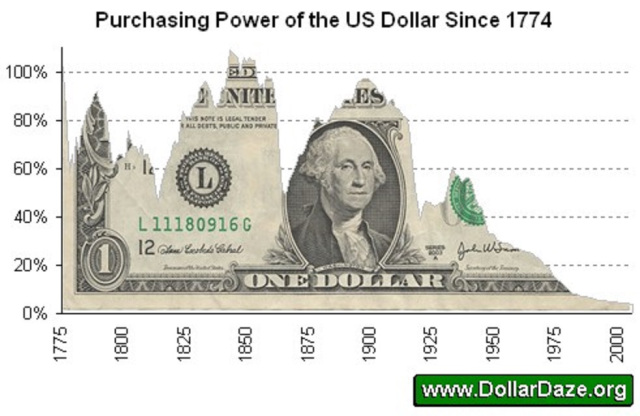How tokens deliver functions of money
In this post we will review how the different forms of currency are suitable to deliver the functions of money. We will also cover how these money funcions are currently delivered by fiat, what benefits brought the advent of electronic money and finally how CryptoCommodities disrupt on it.
Initially we will cover the 3 primary functions: Medium of Exchange, Store of Value and Unit of Account. A call of attention here, authors from Austrian School of Economics considered Medium of Exchange as the only valid function of money.
A medium of exchange is any item that is widely acceptable in exchange for goods and services. Fiat is the universal medium of exchange from 1971. The advent of blockchain and tokenization has not done much to improve this function of money as cryptocurrencies are not yet significantly used as medium of exchange. The lack of standalone cheap wallets have not helped with this situation. Instead, cryptocurrencies have been more focused in other functions of money as investment. CryptoCommodities borrows Austrian Economics ideas to be proposed as a reliable medium of exchange.
A store of value is a commodity, asset, or money that retains its value, or purchasing power, and does not depreciate. Fiat do not have a good track of record as store of value since its purchasing power has collapsed 95% in one century. Fiat based Security tokens inherit the same fiat drawbacks. NFTs instead bring store of value feature to crypto as they represent the ownership of an underlying asset. CryptoCommodities also aim to become retain purchaing power as they capture the marginal utility of the underlying asset.

A Unit of Account is a standard numerical monetary unit of measurement of the market value of goods, services, and other transactions. A money of account os expected to have an stable value to enable price calculations. According to Hayek:
It. seems to me that the decisive factor that would create a general preference for a currency stable in value would be that only in such a currency is a realistic calculation· possible
He claimed for Wholesale commodity prices as standard of value for currencies over international regions
My expectation would be that, at least for large regions much exceeding present national territories, people would agree on a standard set of wholesale prices of commodities to treat as the standard of value in which they would prefer to have their currencies kept constant.
Cryptocurrencies have not added any value as Units of Account. Bitcoin or Monero are not stable enough to enable price calculations. Fiat can be of application at the short term but inherits the problems of being a poor Store of Value to become Unit of Account for long term, and price adjustment are required. Instead, a Gold standard across a region could provide a reliable Unit of Account.
| Past | Now | Soon | ||||||||
|---|---|---|---|---|---|---|---|---|---|---|
| Fiat | Unpegged Token | Utility Token | Security Token | Stablecoin | NFT | Gold Standard | Crypto Commodity | |||
| PRIMARY CURRENCY FUNCTIONS | ||||||||||
| Medium of Exchange | ||||||||||
| Store of Value | ||||||||||
| Unit of Account | ||||||||||
| SECONDARY CURRENCY FUNCTIONS | ||||||||||
| Transfer of Value | ||||||||||
| Vehicle of Investment | ||||||||||
| Medium of Fundraising | ||||||||||
| SOCIAL FUNCTIONS | ||||||||||
| Credit | ||||||||||
| Wealth Distribution | ||||||||||
| Social Control | ||||||||||
The secondary money function are somehow subjective and depend on the author. We propose the following: Transfer of Value, Vehicle of Investment and Medium of Fundraising.
The Transfer of Value function means the ability of transferring purchasing power between 2 parties. Fiat has been a suboptimal standard of Transfer of Value because its built-in high commissions and delays in a process with many relayer. Cryptocurrencies as Utility Tokens, Stablecoins or NFT came to optimize the process by large by allowing instant payments at not cost. CryptoCommodities inherit this feature provided by distributed ledger systems.
The main innovation of cryptocurrencies have been converting the money into a Vehicle of Investment. This new money function was barely provided by fiat (FOREX market). Utility Tokens have been an investment product for a few years with disparate results. Despite the process is valid, lack of market trasparency have created a groundplay for many scams. Utility Tokens will need an enhanced transparency to consolidate as Vehicle of Investment. On the other hand, Security Tokens and NFT are being proposed as Vehicle of Investment and they intend to achieve recognition by means of regulation. The outcome of this process is still unkwown. CryptoCommodities borrow the ideas from Utility Tokens but aim to enhace the required transparency to the process.
The function as Medium of Fundraising of a project for the currency issuer has been brought by Utility Tokens and is adopted by CryptoCommodities. We think this function contributes to enterpreneurship and wealth for the society.
And finally, the 3 social functions of money: Credit, Income Distribution and Social Control.
The Credit function is a contractual agreement in which a borrower receives something of value immediately and agrees to pay for it later, usually with interest. The function of credit was the main topic that favours fiat money to the detriment of Gold Standard. Our lifes are built on credit. Cryptocurrencies, specially Stablecoins and NFT, come with the promise to increase the amount of credit available. Utility Tokens are less suitable for credit because their price inestability. The advantage of withdrawing the credit function from fiat and transferring the to the cryptocurrencies is the privatization of risk. CryptoCmmodities inherit ability to provide credit derived from their stablecoin nature and price stability.
The last 2 funcions "Wealth Distribution" and "Social Control" are antagonists. Neither Fiat money nor existing tokens deal with Wealth Distribution as long as creating a cryptocurrency is a painfull process, not suitable for everyone, and requires a specific set of skills. Tokenization Platforms enabling CryptoCommodities as a service attemp to provide anyone the ability to fund their projects and therefore the possibility of Wealth Distribution. Social Control instead is not a desirable fucntion of money. A currency to provide Social Control must have 2 features: expandable supply at the will of the issuer and lender of last resort. Only fiat money by definition fulfills these requirements with the consequences that we all know.

